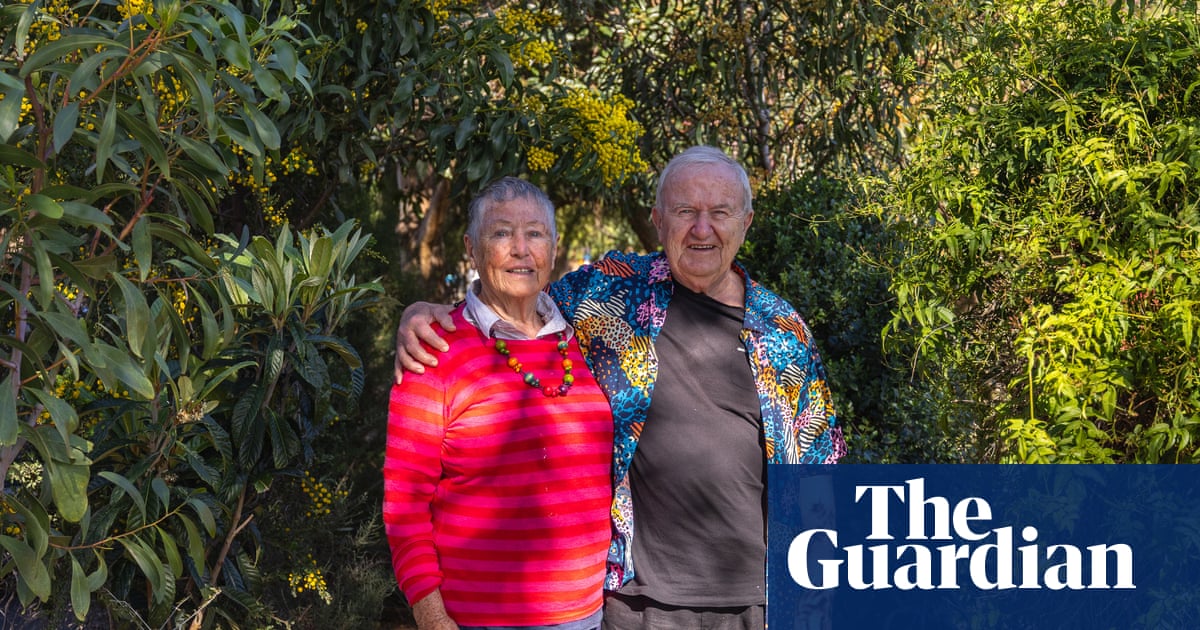As soon as John Boland moved into his house in inner-city Adelaide he got rid of the concrete and sheds and planted fruit trees. In the 30 years since, those trees have provided him with a third of his food and cooled his home so well he doesn’t need air conditioning.
Deciduous trees on the western side of the house bathe the house in shade in the hot South Australian summer while letting in afternoon sun during winter. They also block hot breezes in summer and cold winds in winter.
“We basically live in the jungle,” Boland says. “We [sit] listening to birds singing, rather than listening to air-con belching away, and enjoy having a meal in a beautiful bush setting in the middle of the city.”
A 76-year-old professor of environmental mathematics, Boland lives with his wife, Chris Bryant, on a traditional quarter-acre block in Felixstow, 6km from the city centre. The couple have long had a keen interest in sustainability and started to make the house more efficient and comfortable shortly after moving in 28 years ago.
“We try to pick the easy things first and see if they work,” Boland says. “We know a lot of the principles – me from the climate side of things, and Chris from the food production side of things – and we’re able to merge the two and just see how we go.”
Instead of knocking their 1940s weatherboard house over and starting from scratch, Boland and Bryant found opportunities to improve sustainability as they arose. A simple example: when they had to take their walls apart to remove asbestos or fix termite damage they made sure to have insulation installed as part of the repairs.
Boland, who did his PhD on heat flows in houses, has gradually redesigned the home to maximise ventilation, installing mesh security screens so he can leave doors and windows open. He had the interior wall between the lounge room and the pantry knocked out to ensure evening breezes could flow through the house.
“In summertime, we might go out for a walk in the evening, have the doors open but lock the security doors … all we can hear from the other neighbours is their air conditioners going,” he says. “They haven’t looked at what the weather is doing and tried to take advantage of it, which we do.”
The couple moved early, in March 2000, to adopt solar panels but kept their change-by-degrees approach by opting for a smaller system to see if they could limit their energy consumption. “Until we need it, we don’t do it,” Boland says. “It’s that sort of idea, try something minimal first.”
They stuck to the smaller system and managed to use less energy than they generated, but in 2021 took advantage of an expanded government subsidy to add more panels and a battery. They drink rainwater and channel their washing machine’s runoff into the garden, home to birds, blue tongue lizards and four kinds of frogs.
From season to season, their suburban orchard produces apples and pears, macadamia and pecan nuts, peaches and pomegranates, native limes and quandongs, lemons and mandarins and more, all packed in tight and flourishing in the fertile Adelaide soil. By planning their meals around their garden’s seasonal produce and composting as much waste as possible, the couple have cut their landfill contribution. They put out their household rubbish bin for council collection only once a month, rather than once a week.
Their reduced environmental impact extends to transport. If Boland has to go to the shops he walks or takes the bus, having gone without a car for more than a decade. “We had a car accident about 13 years ago, and we never got around to buying another,” he says.
While Boland’s efforts haven’t always gone smoothly – from planting trees that didn’t suit the climate to installing windows that were impractically large – he says the mistakes along the way just helped him improve later redesigns.
“I’m a mathematician too, so I’m into optimisation, and we’re trying to optimise our whole system of living,” he says. “It’s just absolutely wonderful fun, to be honest, and satisfying.”
Along with teaching, Boland now gives public talks encouraging Australians to adopt simple ways to make their homes more comfortable to live in. Common tips include keeping plants on balconies, opening windows for ventilation in the summer, and cutting out draughts from unsealed doors and windows in the winter.
“See, that’s the whole thing,” he says. “A lot of this stuff that we do is basically about increasing comfort, not just about energy savings.
“You can have fun and try things, see how far you can go.”
